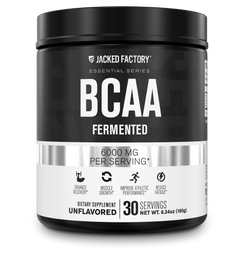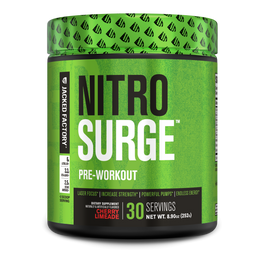German Volume Training was created during the mid-70s in Germany and was popularized by the National coach of weightlifting Rolf Feser. This method, also known as the “10 sets method”, was used by off-season weightlifters to gain lean body mass and shed unnecessary body-fat.
Weightlifters would commonly move up an entire weight class in twelve weeks due to the sheer effectiveness of this program.
German Volume Training was brought mainstream by Charles Poliquin in a 1996 issue of the magazine Muscle Media 2000, and since then has been a stock program for gym rats all over the planet. Jacques Demers, a silver Olympic weightlifting medalist, accredited his strength and massive leg size to German Volume Training.
How German Volume Training Works
German Volume Training targets a specific group of motor units, exposing them to intensive amounts volume with ten sets of a single exercise. The body adapts to the mass amounts of stress by hypertrophying (muscle-growth) the targeted fibers to cope with the workload.
Although this program is geared more towards hypertrophy than strength, it still has a substantial positive impact on performance for any weightlifter. Practicing a lift for ten sets every five days is going to drastically improve your form and muscular endurance.
When you do a high amount of sets for a single exercise, fatigued muscle fibers will begin to drop out, and new, unused fibers will join in to compensate. At the end of ten sets, you will have literally used parts of your muscles that you have never used before.
“To say this program adds muscle fast is probably an understatement. Gains of ten pounds or more in six weeks are not uncommon, even in experienced lifters.” – Charles Poliquin
The goal with this method is to complete ten sets of ten reps for each exercise. You’ll want to start with a weight of which you could do twenty reps until failure, which for most people is 60% of their 1RM (one rep max).
So if you can squat 400 pounds for one rep, you would then use 240 pounds for your ten sets of ten. You should keep the weight the same throughout the ten sets and only increase the weight by five percent once you have completed your ten sets of ten with constant rest intervals.
The rest intervals are short (60 seconds between accessory work and 90 seconds between the main lifts) which results in accumulative fatigue. You may find yourself getting your strength back during the eight and ninth sets because of a temporary neural adaptation.
You’ll only be performing one exercise per body part so you’ll only be doing lifts that recruit the most amount of muscle fibers, such as bench press and squats. For accessory work, you can do 3 sets of 10-20 repetitions.
Refrain from using any intensity techniques such as forced reps or drop-sets, since the volume will take care of the strength and hypertrophy on its own. At the same time, the intense amount of volume will make your recovery harder and longer. Typically training a body part every four to five days is sufficient.
Below is the recommended body part split for lifters new to the German Volume Training method. To prevent injury, we highly recommend you purchase specialist powerlifting shoes to give you the support and weight distribution needed.
Recommended German Volume Training Split
| Day 1 | Day 2 | Day 3 | Day 4 | Day 5 |
|---|---|---|---|---|
| Chest and Back | Legs and Abs | Off | Arms and Shoulders | Off |
After day five you’ll start over from day one, so each training cycle is five days. You’ll want to keep a notebook to track your progress, and a stopwatch to track your rest intervals.
Charles Poliquin also recommends keeping a specific tempo when doing certain lifts. For example, when doing long-range movements such as squats you would use a 40×0 tempo, and for shorter range movements a 30×20 tempo.
The first number represents the eccentric portion of the lift, and the second number represents the concentric part of the lift. The eccentric portion is the negative part of the movement (if you’re benching the eccentric portion would be you lowering the bar down to your chest), and the concentric would be the positive part of the lift (again using bench press as an example pushing the bar up from your chest after lowering it would be the concentric portion).

The tempo is really the least important part of the program and is not mandatory, so if you feel that it is too much to keep up with then, by all means, drop it. However, you must keep up with the rest intervals as they are part of what makes German Volume Training such a well-respected program.
Below is a sample routine based on a five-day cycle and is phase one of German Volume Training. Once you’ve done six workouts for each body part you will move on to a different program for three weeks and then return to complete phase two.
Beginner/Intermediate German Volume Training Program Phase One
Day 1: Chest and Back
| Exercise | Sets | Reps | Tempo | Rest Interval |
|---|---|---|---|---|
| A-1 Bench Press | 10 | 10 | 40×0 | 90 seconds |
| A-2 Chin-ups | 10 | 10 | 40×0 | 90 seconds |
| B-1 Incline Dumbbell Flyes | 3 | 10-12 | 30×20 | 60 seconds |
| B-2 Seated Rows | 3 | 10-15 | 30×20 | 60 seconds |
Day 2: Legs and Abs
| Exercise | Sets | Reps | Tempo | Rest Interval |
|---|---|---|---|---|
| A-1 Squats | 10 | 10 | 40×0 | 90 seconds |
| A-2 Leg Curls | 10 | 10 | 40×0 | 90 seconds |
| B-1 Weighted Sit-ups | 3 | 15-20 | 20×20 | 60 seconds |
| B-2 Calf Raises | 3 | 10-15 | 20×20 | 60 seconds |
Day 3: Rest Day
Day 4: Arms and Shoulders
| Exercise | Sets | Reps | Tempo | Rest Interval |
|---|---|---|---|---|
| A-1 Dips | 10 | 10 | 40×0 | 90 seconds |
| A-2 Hammer Curls | 10 | 10 | 40×0 | 90 seconds |
| B-1 Lateral Raises | 3 | 10-15 | 20×0 | 60 seconds |
| B-2 Lying Side Laterals | 3 | 10-15 | 20×0 | 60 seconds |
Day 5: Rest Day
You superset the A-1 and A-2 exercises together with a 90-second rest between sets, and you do the same for the B exercises with a 60-second rest. So you will do A-1 then rest for 90 seconds, do A-2 then rest for 90 seconds, then do A-1 again and rest for 90 seconds, etc. Keep doing that until all sets of A-1 and A-2 are completed then move on using the same cycle for B-1 and B-2 (remember only 60 seconds rest instead of 90).
After you have completed the first phase, you will move onto a different program for three weeks. The recommendation is doing a phase of only four-six sets per body part over a five day period with 6-8 reps per set. You can do any split of your choice as long as it fits your recovery ability.
After the three week intermission, you can return to German Volume Training and begin phase two. With phase two, you will still be using ten sets but will now only be doing six reps for the main lifts. For the exercises that use ten sets, use a weight which you could normally do 12 repetitions with.
Beginner/Intermediate German Volume Training Program Phase Two
Day 1: Chest and Back
| Exercise | Sets | Reps | Tempo | Rest Interval |
|---|---|---|---|---|
| A-1 Incline Barbell Bench Press | 10 | 6 | 50×0 | 90 seconds |
| A-2 Wide Grip Pull-ups | 10 | 6 | 40×0 | 90 seconds |
| B-1 Dumbbell Flyes | 3 | 6 | 30×10 | 60 seconds |
| B-2 Barbell Rows | 3 | 6 | 30×10 | 60 seconds |
Day 2: Legs and Abs
| Exercise | Sets | Reps | Tempo | Rest Interval |
|---|---|---|---|---|
| A-1 Romanian Deadlifts | 10 | 6 | 50×0 | 90 seconds |
| A-2 Leg Curls | 10 | 6 | 50×0 | 90 seconds |
| B-1 Twisting Crunches | 3 | 12-15 | 30×30 | 60 seconds |
| B-2 Calf Raises | 3 | 10-15 | 30×30 | 60 seconds |
Day 3: Rest Day
Day 4: Arms and Shoulders
| Exercise | Sets | Reps | Tempo | Rest Interval |
|---|---|---|---|---|
| A-1 Close Grip Bench Press | 10 | 6 | 50×0 | 90 seconds |
| A-2 Close Grip EZ Bar Curls | 10 | 6 | 50×0 | 90 seconds |
| B-1 Lateral Raises | 3 | 10-12 | 20×0 | 60 seconds |
| B-2 Lying Side Laterals | 3 | 10-12 | 20×0 | 60 seconds |
Day 5: Rest Day
You can keep using phase two until you plateau, then move onto something else. This is a sample program so you may substitute any exercise you want as long as you follow the guidelines of German Volume Training.
For the main lifts (A-1 and A-2) be sure to pick a movement that will recruit the most fibers, and include the basic compound lifts whenever possible. Another good option would be to choose a variation of a compound lift such as front squats instead of squats.





